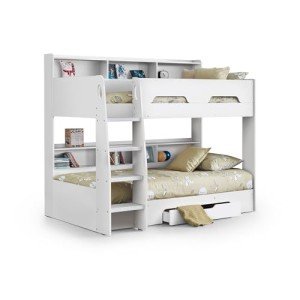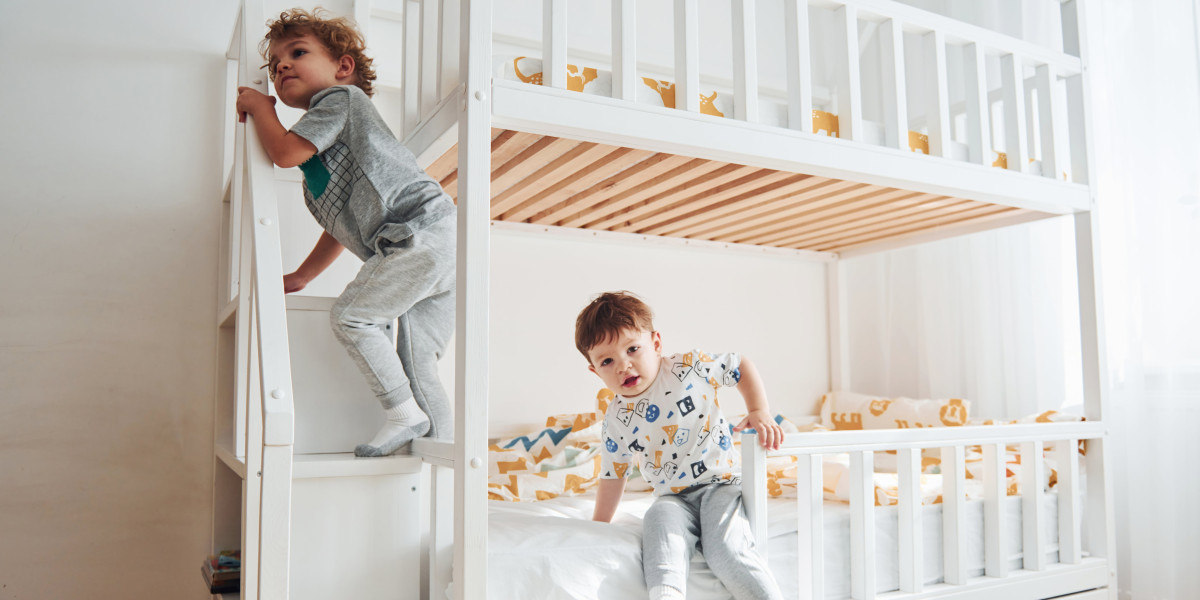
The Ultimate Guide to Kids Bunk Beds: Maximizing Space and Fun
With the rise of vertical living and smaller areas, the popularity of bunk beds has soared among families. Bunk beds not only use a practical sleeping option, especially in shared rooms, but they likewise bring an aspect of enjoyable into a kid's life. This comprehensive guide dives into the functions, advantages, and considerations of kids' bunk beds, making it much easier for moms and dads to pick the ideal bed for their youngsters.
Functions of Kids Bunk Beds
Bunk beds are flexible furniture pieces that serve more than a single function. Here are some key functions to think about:
| Feature | Description |
|---|---|
| Material | Bunk beds can be constructed from wood, metal, or a combination of both, offering differing levels of durability and style alternatives. |
| Safety Features | Most bunk beds come geared up with guardrails, safe ladders, and topped assistances for safety, especially important for children. |
| Style Variety | Choices vary from timeless styles to contemporary designs, guaranteeing a match for any space décor. |
| Space-Efficiency | bunk beds children's beds use vertical space saving bunk beds, making them ideal for smaller rooms. |
| Convertible Options | Some designs can be converted into 2 different beds, providing flexibility as kids grow. |
| Storage Solutions | Some bunk beds feature built-in storage drawers or racks, assisting to keep the room organized. |
Benefits of Kids Bunk Beds
Buying a bunk bed comes with numerous benefits:
- Space Saving: bunk beds in sale beds optimize floor space, permitting for more backyard or storage solutions.
- Fun Factor: With a bunk bed, kids belong that fosters imagination and friendship throughout slumber parties or playdates.
- Cost-efficient: Instead of acquiring two separate beds, a bunk bed can accommodate two kids simultaneously, saving cash in the long run.
- Adaptability: Many bunk beds can be disassembled or converted into twin beds, making them a long-lasting investment as kids's requirements alter.
- Social Interaction: Bunk beds motivate household bonding and friendships, providing an inviting space for kids to share stories and laughter.
Factors to consider When Choosing a Kids Bunk Bed
When picking the ideal bunk bed for a kid, moms and dads need to take into account numerous aspects:
- Safety Standards: Ensure that the bunk bed adhere to security policies and includes essential safety functions.
- Age Appropriateness: Different models cater to various age. For example, standard bunk beds might not appropriate for more youthful children.
- Space Dimensions: Measure the bedroom to guarantee the bunk bed fits appropriately, permitting space to walk around comfortably.
- Weight Capacity: Consider the weight load of each bed and ensure it accommodates the child's weight comfortably.
- Design Preferences: Letting children take part in the selection procedure can assist them feel more excited about their new bed.
Types of Kids Bunk Beds
Bunk beds are available in various styles and setups to fit different requirements:
| Type | Description |
|---|---|
| Requirement Bunk Bed | A classic design with one bed stacked on top of another, normally using a ladder to access the top bunk. |
| L-Shaped Bunk Bed | Features 2 bunk beds linked in an L-shape, frequently more roomy and appropriate for kids sharing a room but requiring a bit more space. |
| Triple Bunk Bed | Comprises three stacked beds, ideal for making the most of sleeping arrangements in very limited spaces. |
| Loft Bed | A raised bed with space underneath that can act as a play location, research study corner, or additional storage. |
| Futon Bunk Bed | Combines a bunk bed on top with a futon or sofa beneath, making it great for slumber parties and maximizing space use. |
| Convertible Bunk Bed | Can be separated into 2 private beds, offering versatility as children's requirements change. |
Caring for Kids Bunk Beds
Maintaining bunk beds is vital for guaranteeing longevity and security. Here are some basic care practices:
- Regular Inspections: Check the bed regularly for loose screws and tightened up bolts to ensure stability.
- Tidiness: Keep bed linen tidy and fresh, rotating bed mattress for even use.
- Guardrails: Ensure guardrails are protected and in location, specifically if kids tend to move around a lot in their sleep.
- Air Circulation: Ensure the bed has enough airflow, preventing moisture buildup that can result in mold or mildew.
Frequently Asked Questions About Kids Bunk Beds
Q1: At what age can a child safely utilize a bunk bed?
A1: Generally, kids aged six and older are considered safe to use the upper bunk due to the height and stability elements included.
Q2: Can I place a bunk bed near a window?
A2: It is suggested to prevent placing a bunk bed near windows to lower the danger of falling or injuries.
Q3: Are bunk beds safe for more youthful children?
A3: While some modern bunk beds come with security features accommodating more youthful kids, it is typically suggested to wait until they are older, typically over 6 years.
Q4: What is the common weight limitation for top bunks?
A4: Weight limitations vary by model but generally vary from 150 to 250 pounds. Constantly refer to the maker's specifications.
Q5: How typically should I inspect the bunk bed's safety features?

A5: It is advisable to carry out a security check every couple of months or whenever you discover any indications of wear.
kids bunk beds' bunk beds work as a strategic solution for families looking to take full advantage of space while providing an enjoyable and interesting sleeping environment for their children. With a variety of alternatives offered-- from basic designs to loft beds-- parents have the liberty to choose something that meets their family's specific requirements. By considering important aspects such as security, room viability, and their children's preferences, parents can make an educated option, guaranteeing that each child is delighted about bedtime while gaining from a well-organized room.






